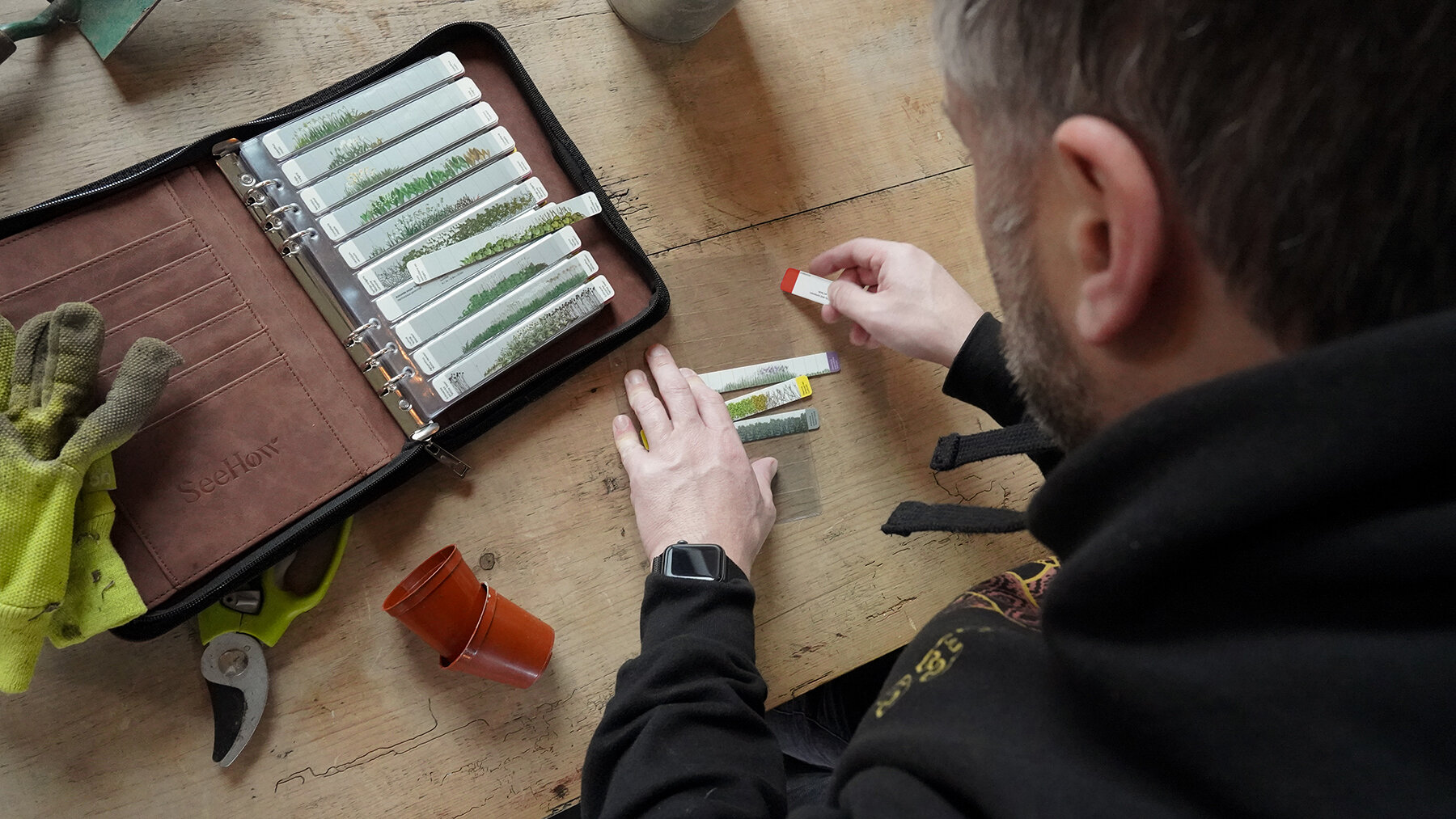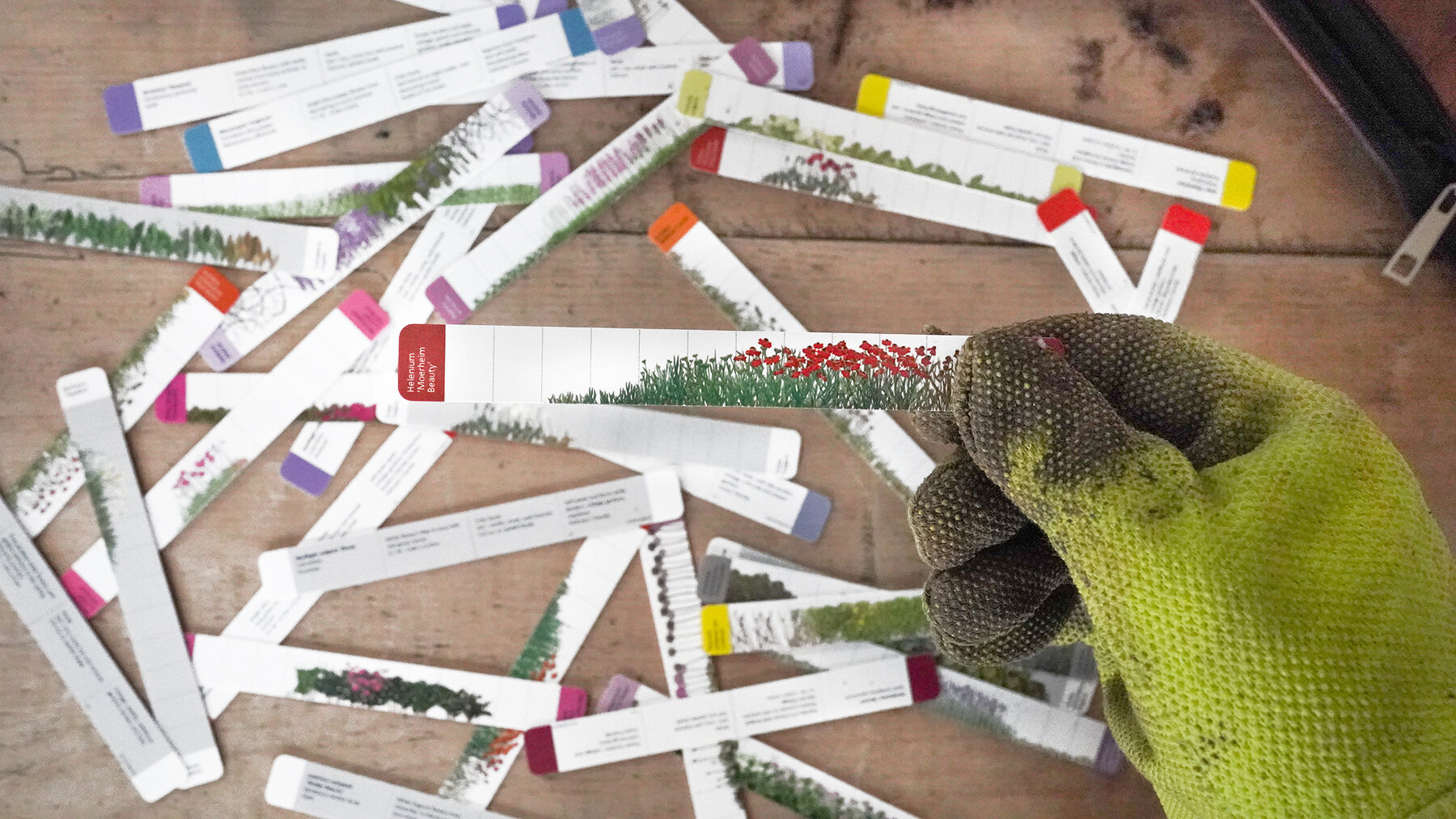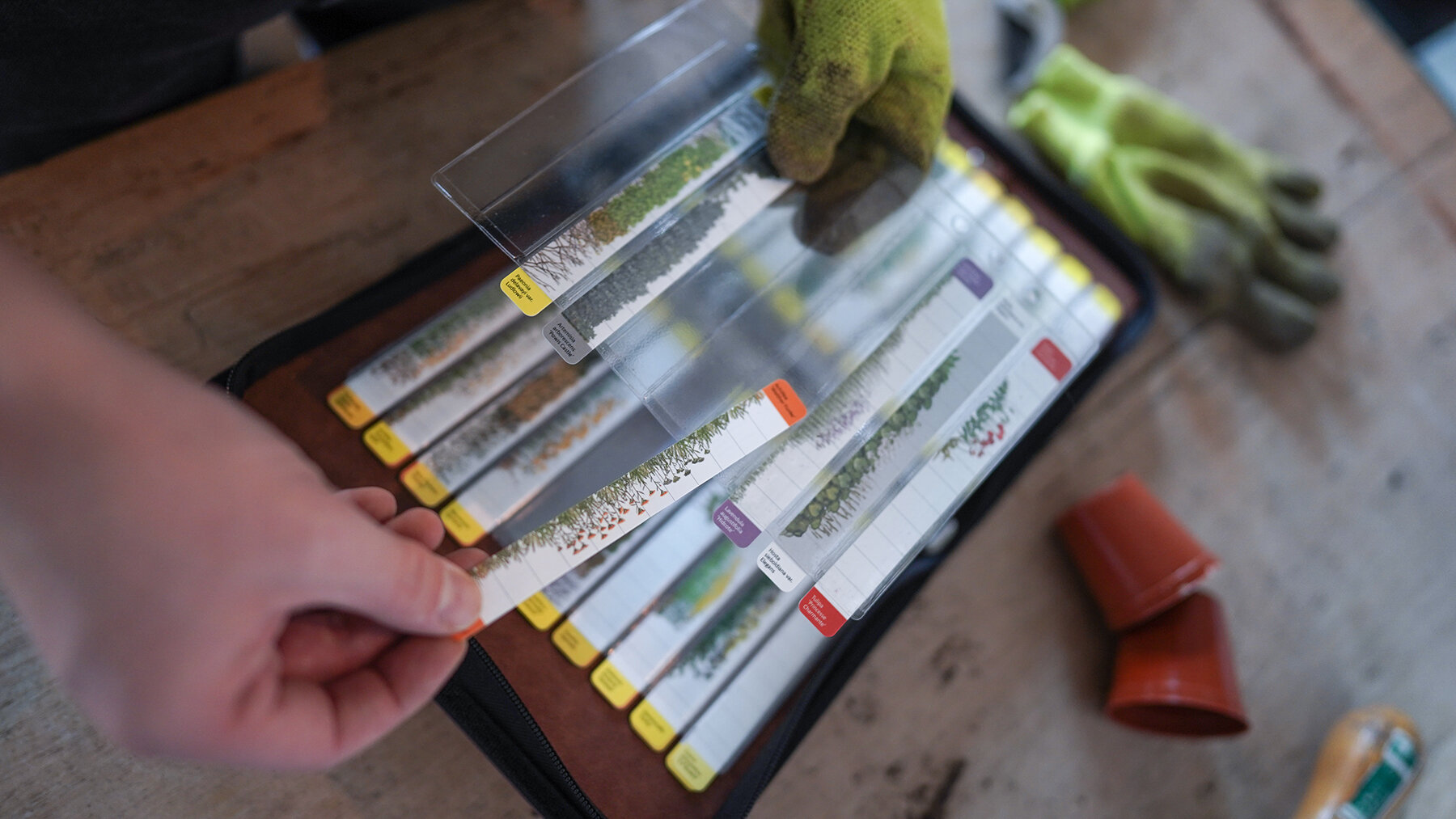
Our Story
SeeHow began life as a way of comparing the colours of plants over the gardening year. There are thousands of plants, of every size, shape and colour and they all grow and change in their own ways over the seasons of the year. A garden never stands still! Books are all very well, but most are packed with words and surprisingly few photographs, whereas for most of us, the purpose of gardening is to create a visual experience. What we felt the World needed was a way to turn thousands of words into easily-understood pictures.
The ‘eureka moment’ occurred when we were thinking about the effect of using Kerria japonica to provide edge-screening to a small courtyard – how successful this would be over the four seasons. Without too much thought, we sketched the annual cycle of the plant on to a roughly drawn twelve-month calendar grid. This only took a few minutes and the first ‘Plantstick’ was born. For the first time we could actually see the plant changing across each month of the year as a single unique organic graphic. The many words from the books had been turned into a single picture that could be understood by anyone.
We were excited and quickly followed this with similar sketches of other plants from our garden – large flowering evergreens like the Ceanothus ‘Puget Blue’, climbers like Wisteria sinensis, various bulbs and even the woody shrub Lonicera purpusii ‘Winter Beauty’.
Very quickly, just using coloured pencils and some marker pens for brighter flower colours, We created the first ‘colour-calendar’ – of a garden. Of course there is a world of difference between those early sketches and the 140 beautiful and unique illustrations that can now be found in the first SeeHow Manual Vol. 1.
To turn the idea into a useful planning tool that could be used intuitively by widely different groups – such as children who may only be interested in flower colour, or gardeners simply trying to better anticipate colour and colour gaps in their gardens, to garden professionals wishing to explore colour combinations and explain planting ideas to their clients – has taken several years. We also wanted to make the SeeHow Manual portable – something that could fit into a small rucksack or bag and be carried to a plant nursery or flower show easily.

Regarding flowering season, there is a difference of a few weeks between the flowering time of a plant growing in the south of England and the same plant growing in northern Scotland. Flowering periods can also be affected by seasonal variations from the norm and by local microclimates. We have therefore adopted the flowering period that one might find in central England, which is a good general guide for the UK.
One issue that emerged quickly was the varying sizes of plants and how to illustrate them in a comparable way on a 12month calendar-grid of fixed size. Our favourite Kerria will easily reach 3.0m in height, so the question was how to show this on a Plantstick measuring only 16mm high (the smallest version), beside a Californian poppy that only grows to 20cm high. In the end we decided to focus on when the flower colour occurs. However, this does also include the colour green – the predominant plant colour in any garden! For this reason, a number of larger plants are actually drawn in full, particularly Herbaceous perennials, which means they are rather small in the illustrations. However, these illustrations do show the plant from the point it emerges above the soil to the point it disappears. Also, many plants end their annual cycle in a way that leaves good winter structure, important for wildlife. In these cases the illustrations also indicate the overall presence of the plant in the garden, even if the part that is shown is actually dead.
The illustrations therefore do vary in terms of visual scale, but we believe that their quality and accuracy will resolve the scale differences and the important characteristics of the plant will be apparent. To help with this issue, the information on the back of the Plantsticks includes the typical height and spread of a well-established plant.

SeeHow Vol. 1 contains an enormous amount of plant data gleaned from many sources as well as countless visits to gardens and plant nurseries.
This was then distilled and recorded in a consistent way for every plant, however we would welcome comments and suggestions for improving the illustrations or notes. In addition, we can create Plantsticks of other plants upon request, potentially featuring them in the plant list for Vol. 2 and would welcome any suggestions you may have for this, just click on the button below and send us your thoughts.

Buy your SeeHow
manual now

